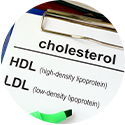By Dr. Allan Magaziner
It’s nothing to sneeze at: 54 million Americans suffer from seasonal allergies. Until now, many have either wearily resigned themselves to the watery eyes, runny nose, sneezing, wheezing and hives associated with the condition, or have opted to try to combat these symptoms with allergy shots that can be costly and inconvenient.
That’s been the bad news. The good news is that a recent study of more than 60 patients allergic to pollen, dust mites and cat allergens has shown that an approach known as sublingual desensitization is indeed a safe and effective alternative to traditional immunotherapy injections. The study findings have prompted researchers to strongly recommend its use, especially in children. In the study, the practice was shown to significantly reduce the symptoms of hay fever and nasal allergies, as well as the need for medication, compared to placebo.
The study finally validates what we’ve been practicing at the Magaziner Center for Wellness with great success for more than 24 years. During this time, we’ve found sublingual desensitization (which is defined as immunotherapy using drops or pills) to be:
- Safer
- Less invasive
- More convenient – as it can be self-administered by the patient
- Without risk of anaphylactic shock, a potential side effect of immunotherapy injections.
- Less taxing mentally and physically
This last bullet has been an important one for our patients who are children whose parents wisely sought a natural therapy. Sublingual desensitization is great for kids – it’s the difference between taking a drop or a pill orally versus being stuck with a needle. And, let’s face it, how many children do you know that aren’t a little upset at the sight of a needle?
Like all treatments at the Magaziner Center for Wellness, our patients first undergo a thorough evaluation. We test patients’ reactions to common, as well as unexpected, allergens, including:
- Food
- Smoke
- Cat/dog dander
- Pollens (grass, trees and weeds)
- Dust/dust mites
- Chemicals (perfumes, paint, carpets, etc.)
- Mold
Why? Because, simply put, allergies are additive. If a person suffers from seasonal allergies, what he or she eats and breathes throughout the year affects his or her reaction during the documented allergy season. In fact, we have found that food allergies and food sensitivities have more to do with chronic complaints than almost any other factors.
After patients’ reactions are tested, we use injection therapy to place tiny amounts of the allergen into the bloodstream to assess clinical symptoms and behavioral reactions (i.e., change in frequency of headaches, even handwriting samples). When we get to the point that triggers a response, we give successive dosages until the symptoms that have been created disappear. Once the level is identified, we make up a vial of antigens that patients place as drops under their tongue on a daily basis.
In the simplest terms, we are naturally treating the immune system and getting it to respond appropriately to the allergens. This takes time, of course, so it is recommended that anyone who suffers from seasonal allergies receive treatment in mid-March so that the immune system’s response can be built well in advance of the blossoming of trees and flowers between April and October.




































Recent Comments